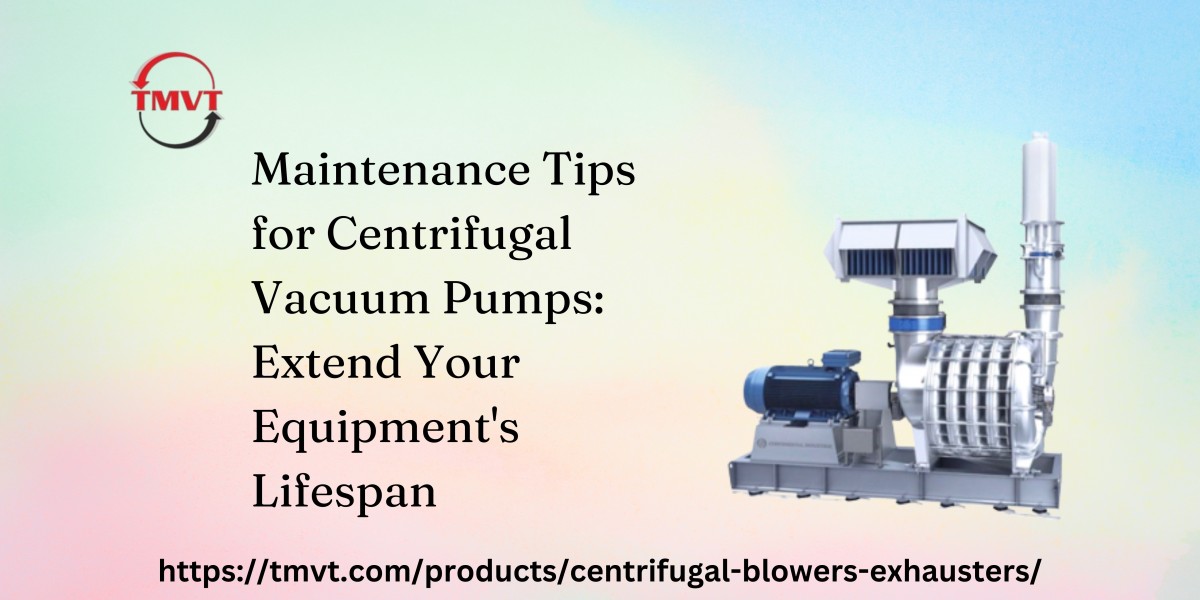Introduction
Centrifugal Vacuum Pumps are integral to various industrial applications, including chemical processing, pharmaceuticals, and food manufacturing. Ensuring their optimal performance and longevity requires a comprehensive maintenance strategy. This guide provides detailed insights into maintaining centrifugal vacuum pumps, helping you maximize efficiency and minimize operational disruptions.
Understanding Centrifugal Vacuum Pumps
Centrifugal vacuum pumps operate by converting mechanical energy into kinetic energy, creating a vacuum through the rapid rotation of impellers. Their design offers advantages such as continuous operation, low maintenance requirements, and suitability for handling large volumes of gas or vapor. However, like all mechanical equipment, they are susceptible to wear and tear, making regular maintenance crucial.
Key Maintenance Tips
1. Regular Visual Inspections
Conduct routine checks for signs of wear, corrosion, or damage. Inspect components like impellers, casings, seals, and bearings. Early detection of issues can prevent costly repairs and downtime.
2. Lubrication Management
Proper lubrication reduces friction and prevents overheating. Follow manufacturer guidelines for lubricant type and replacement intervals. Over-lubrication can be as harmful as under-lubrication, leading to seal failures and energy inefficiency.
3. Seal and Gasket Maintenance
Seals prevent leaks and maintain vacuum integrity. Regularly inspect for signs of wear or damage. Replace seals and gaskets as needed to prevent contamination and maintain performance.
4. Impeller and Casing Care
Ensure impellers are free from debris and buildup, which can cause imbalance and reduce efficiency. Inspect casings for cracks or corrosion. Clean components regularly to maintain optimal flow and pressure.
5. Alignment Checks
Misalignment between the pump and motor can cause excessive vibration and premature wear. Use alignment tools to ensure proper positioning. Regular checks can prevent mechanical failures and extend equipment life.
6. Vibration Monitoring
Excessive vibration can indicate issues like imbalance, misalignment, or bearing wear. Implement vibration analysis to detect anomalies early. Addressing these issues promptly can prevent extensive damage.
7. Temperature Monitoring
Monitor operating temperatures to detect overheating, which can degrade lubricants and damage components. Use infrared thermometers or built-in sensors to track temperature changes. Ensure adequate ventilation and cooling systems are in place.
8. Filter and Strainer Maintenance
Filters and strainers prevent contaminants from entering the pump. Clean or replace them regularly to maintain airflow and prevent clogging. Neglecting this can lead to reduced performance and overheating.
9. Leak Detection
Regularly inspect for air or fluid leaks, which can compromise vacuum levels and efficiency. Use vacuum gauges to detect pressure drops and identify leak sources. Prompt repairs are essential to maintain system integrity.
10. Drive Belt and Coupling Inspection
Check drive belts for signs of wear, cracks, or glazing. Ensure proper tension to prevent slippage. Inspect couplings for alignment and wear. Replace components as necessary to maintain smooth operation.
Maintenance Schedule
Implementing a structured maintenance schedule ensures consistent performance and longevity.
Daily:
Check for unusual noises, vibrations, or leaks.
Monitor pressure and temperature readings.
Verify lubricant levels.
Weekly:
Inspect seals and gaskets.
Clean filters and strainers.
Check alignment and coupling conditions.
Monthly:
Conduct vibration analysis.
Inspect impellers and casings.
Test for leaks using vacuum gauges.
Quarterly:
Replace worn seals and gaskets.
Lubricate bearings and other moving parts.
Inspect drive belts and adjust tension.
Annually:
Perform comprehensive system inspection.
Replace critical components as needed.
Review and update maintenance protocols.
Conclusion
Regular maintenance of centrifugal vacuum pumps is essential for optimal performance and longevity. By adhering to a structured maintenance schedule and promptly addressing issues, you can prevent costly downtime and ensure efficient operation. For high-quality centrifugal vacuum pumps and expert support, visit TMVT's Vacuum Pumps.








